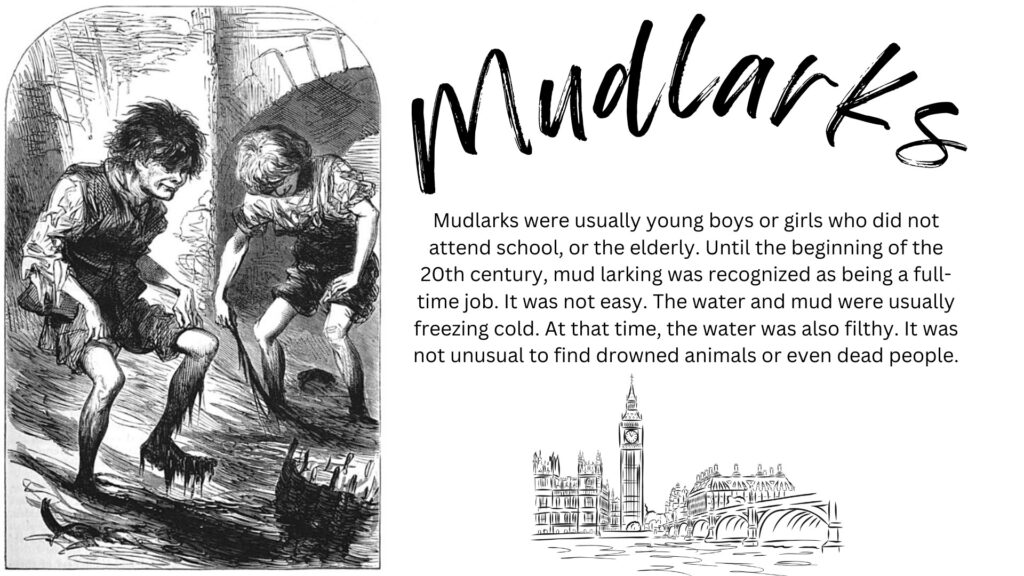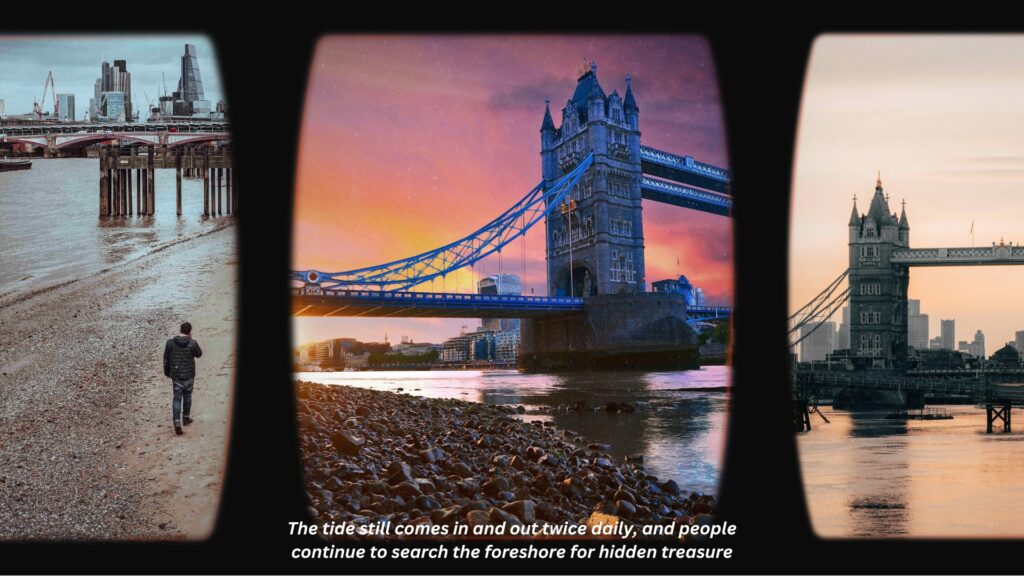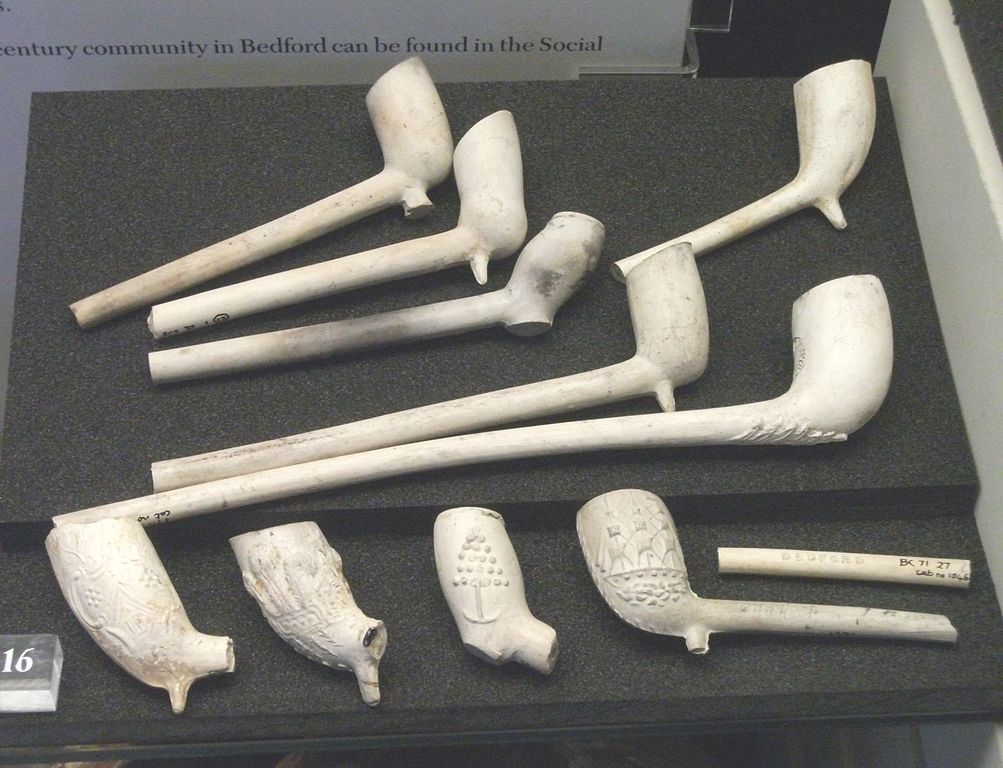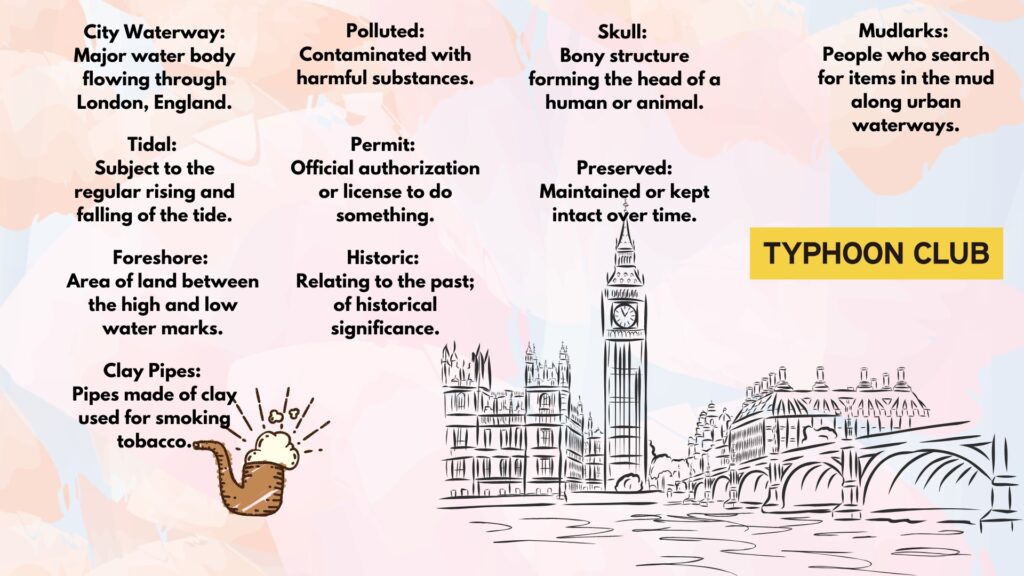
The River Thames runs straight through the City of London. People have lived beside it for thousands of years. Like the sea, the river is tidal. Twice each day, the water rises seven metres before the tide goes out, revealing muddy banks along each side of the river. These areas are known as the foreshore. For as long as people have been living beside this river, they have been throwing things into it. Perhaps it was rubbish, or maybe a wedding ring from a man who had since run away. The River Thames holds many secrets.
During the 18th century, many poor people would stand in the river’s mud when the tide was out. They would search for hidden treasures. They did not expect to find anything of real value like coins or jewels, but simple items they could sell or trade for food. They were known as mudlarks.

Today, the river is recognized as being one of the least polluted urban waterways in the world. The tide still comes in and out twice daily, and people continue to search the foreshore for hidden treasure. It’s different from 150 years ago. Anyone mud larking in the River Thames now requires a permit. Anything they find of historic interest has to be reported to the Museum of London.

One item from the past which mudlarks continue to find are old clay pipes. Workers on the old boats and ships would buy the pipes that were ready and filled with tobacco. When they had finished smoking them, they would throw the used pipes into the river, not knowing they would return to the surface over 100 years later. Because the mud beneath the River Thames is so thick, there is no oxygen. Anything that falls into it will be preserved forever.

Recently, Londoner Martin Bushell was mud larking. He found something that looked a little bit like the top of a human skull. He called the police and passed it to them. When he was walking by the river a few days later, he saw some policemen searching the area. He was worried that he might become involved in a case of murder. He was happy to receive a phone call telling him that what he had found was indeed the remains of a human skull. However, it was 5,600 years old and is now on display in the Museum of London.
Question:

Learn more about mud larking permits being stopped:
VOCABULARY
